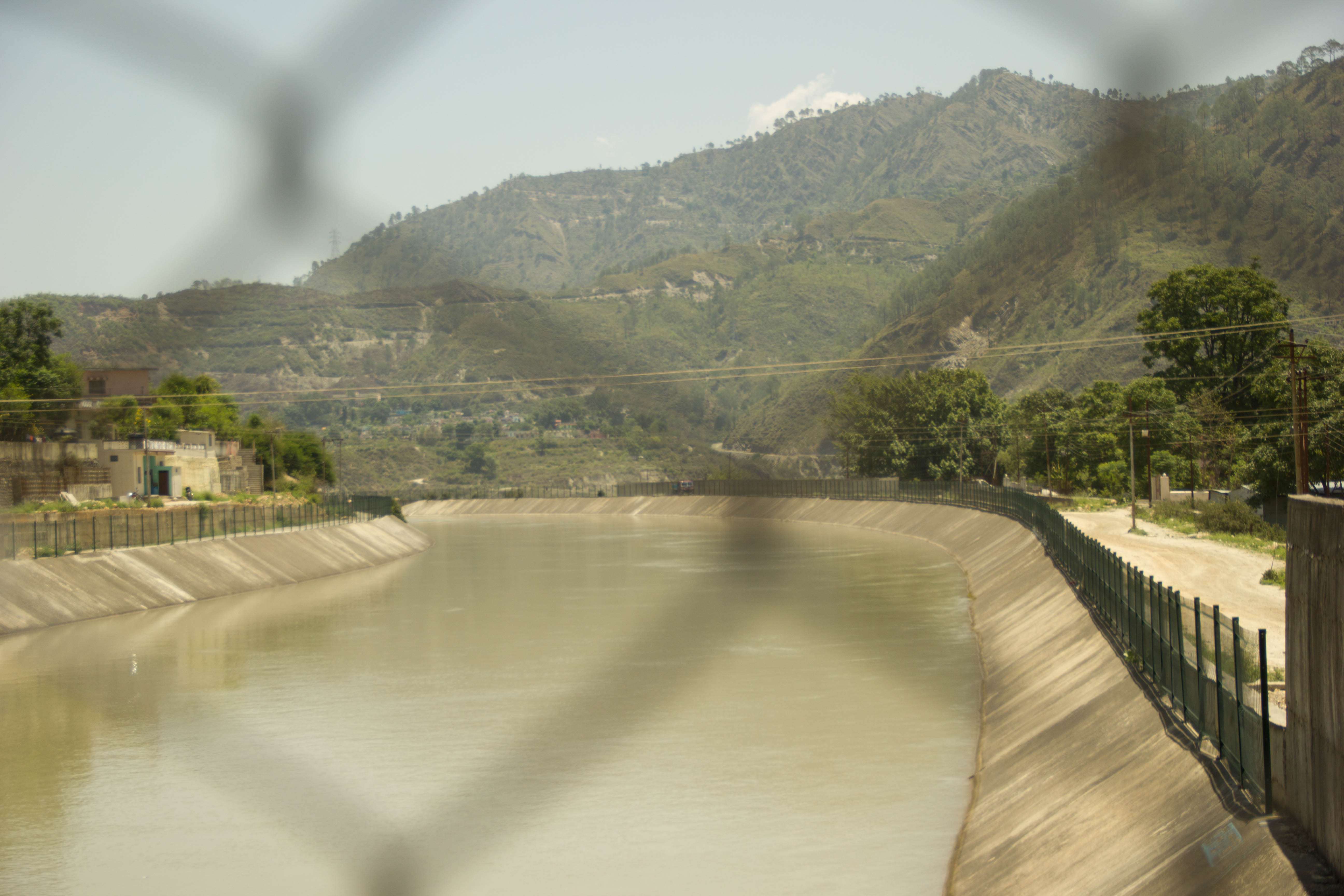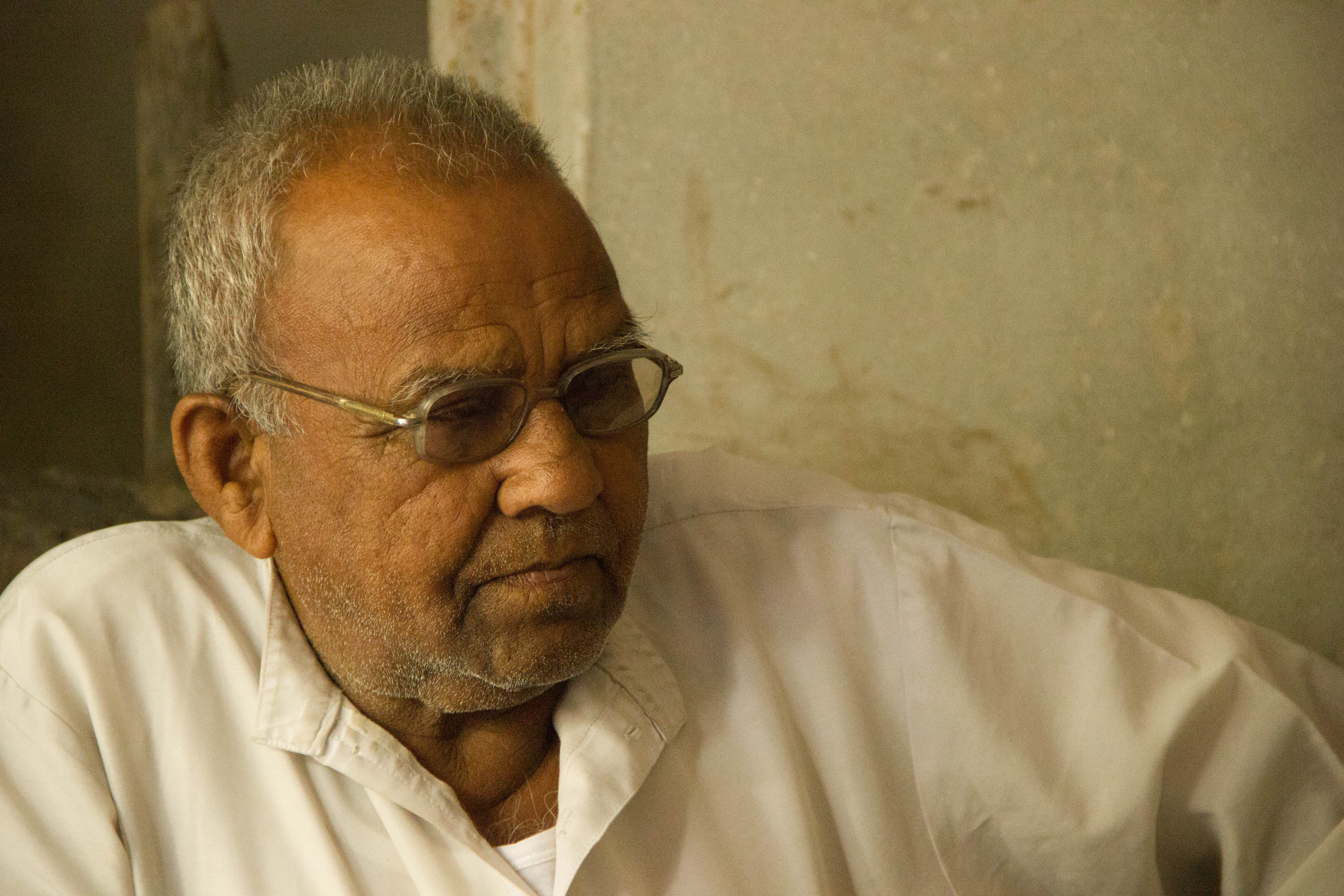The river Alaknanda holds a special, sacred place for Indians. One of the two headstreams of the holiest river Ganga, Alaknanda originates from glaciers at the head of the Alaknanda valley in Uttarakhand's Chamoli district. It runs a 190-km-course in the state's hilly districts of Pauri Garhwal, Rudraprayag and Tehri before merging with Bhagirathi that originates from the Gangotri glacier in the Himalayan state's Uttarkashi district. Bhagirathi flows for 205 kilometres before meeting Alaknanda at Uttarakhand's Devprayag town to become the Ganga. 
The Alaknanda, however, has been reduced to a shallow stream in many places now. Many villages located along the course of the Ganga in Uttarakhand are suffering from severe water shortage as the construction of dams for hydropower projects have sucked the river dry.
To avoid any further ruination of the already ailing Ganga and Yamuna, the Uttarakhand high court had, in March this year, accorded them the status of living entities. The decision implied that any act that harms the river would incur legal repercussions as if the act had harmed a person. Citing practical difficulties in implementing this move, the state government challenged it in the Supreme Court in July 2017, which granted a stay on the high court's order. While the high court's decision raised several doubts, its concern resonates with people who live along the rivers.
Villages search for clean water
Tehri district's Mangasu village is one such village that has undergone many socioeconomic changes due to the drying Alaknanda. The river's water stands blocked by a dam in a 3-km-long concrete channel for the 330-MW Srinagar Hydro Electric Project. The 26-metre-wide channel is fenced on both the sides and villagers are not allowed to take water from the river here.
Only very little water is left in the riverbed which is accessible to villagers but it is unusable even during monsoon because according to

the villagers, the water is stagnant, putrefied and carries dead organisms. Until two years ago, around the time the dam began its operations, the villagers would use fresh water of the river for all their needs. Now, their lives have turned upside down.
Until some time ago, water would leak from a couple of places in the channel and the women of the village would wash clothes there. Once the leakage was sealed, the women had no option but to wash clothes in the stagnant pools of water in the riverbed. At times, they have to make do with this water for drinking, too.
All of Mangasu, a gram sabha of 1,047 people (Census 2011), is affected by the poor quality and quantity of water. Mahesh Bharadwaj, a resident, says other gram sabhas like Thapali, Madhi and Badkot are also affected. These are within 2 km from Mangasu, but not on the banks of the river.
Though her house is only 250 metres away from the Alaknanda's course, Bharadwaj’s wife Rajni Devi, 47, has to depend on the meagre supply of tap water provided by Uttarakhand Jal Sansthan. The tap runs for 15-20 minutes a day and barely fills three vessels.
“The condition this year is very bad. The water is limited and it isn’t even clean,” she rues. She says the supply of water and its potability have worsened this year. Making multiple trips outside the settlement to fetch water from the hand pump that provides groundwater has become one of her daily chores.
Irrigation gets affected
Since the river has dried up, irrigation has become a challenge for the local farming community. Rajni says now, the villagers have to depend on rains for minimal farming in their backyard but large-scale agriculture has become impossible. We couldn’t grow rice this year because there was no water for irrigation, says Bharadwaj.The neighbouring villages of Gugali and Surasu are facing the same predicament.
Currently, over 30 hydropower projects are operational in the Alaknanda basin. About 15 are under construction and over 70 more are proposed. Apart from some private companies, government agencies like Tehri Hydro Development Corporation India Limited, National Hydroelectric Power Corporation Limited and Uttarakhand Jal Vidyut Nigam Limited are behind these projects.
Experts say dams be damned
Himanshu Thakkar, the convener of a Delhi-based organisation that works for water resource development, South Asian Network on Dams, River and People (SANDRP), says dams have destroyed the Alaknanda, the biodiversity within the river, and adversely affected the biodiversity along the banks. In an email interview, he said dams and hydropower projects of any size are big threats to rivers.
Anil Joshi, a Padma Shri awardee and the founder of the Dehradun-based NGO, Himalayan Environmental Studies and Conservation Organisation, says planners do not know the science of the river. He says if water is stopped for long, the adjacent hills are bound to be affected. Highlighting that the Himalayan mountain range hasn't matured and is still developing, he says its soil structure and rocks can become fragile if the dams continue to exist. According to him, a dam also changes the structure of the river's species. “A fish that has to swim upstream for reproduction cannot do so anymore. We are breaking the ecosystem at the micro and macro level,” he says.
End of traditions
As the Alaknanda's free flow in the region has got inhibited, it does not wash away garbage and sewage that flow into it anymore. What remains of the river is so polluted that villagers have begun to shun it despite its revered status. Bachdev Bharadwaj, 77, an ex-army man living in Mangasu, says that earlier the villagers would devotedly wash idols of gods in the river. “But now, we get water all the way from Kedarnath or Badrinath to wash the idols,” he says.
He says the dam has altered the ambiance of the village. With water becoming a rare commodity, many from the younger generation do not want to stay in the village anymore and keep having arguments with the elders about relocating to other places.
The residents of Srinagar town too have a similar story to narrate. Sudhir Uniyal, 52, a lawyer and journalist from the town, says people have stopped bathing in the river on auspicious occasions and prefer tap water now. He says the relation people had with the river is getting weaker by the day. Anil Swami, 59, an activist from Srinagar, says, “Traditions are coming to an end. A newly-wed bride is supposed to pray to the river but there is no river left to pray to now.”
How can the river be saved?
Ashish Kothari, 56, founder of Pune-based NGO Kalpvriksh, suggests a way to monitor the river's health. He says the members of the communities that live by the river, such as farmers and fishermen, and local people and officials can be identified and nominated to form district-level organisations that can make up a Ganga management authority to protect the river.
Swami concurs. “Farmers and women who live here know what needs to be done to protect the environment. They interact with nature on a daily basis. I believe they should be made guardians of the river.”
The central government, on its part, has drafted the National River Ganga (Rejuvenation, Protection and Management) Bill, 2017, to frame a law to protect and rejuvenate the Ganga. The Bill, which is expected to be tabled in the Parliament during the winter session, proposes punishments for a range of offences against the river, the maximum being seven years in jail and a penalty of up to Rs 100 crore. Samir Sinha, the spokesperson of the Ministry of Water Resources, says the Bill would be sent for comments to the states through which the river flows.
Bharadwaj believes the court was right and that recognising the rivers as a living person is needed to save them from dying. But we might have to wait a while before that becomes a reality.
(Shatakshi Gawade is a Pune-based freelance writer and a member of 101Reporters.com, a pan-India network of grassroots reporters.)













